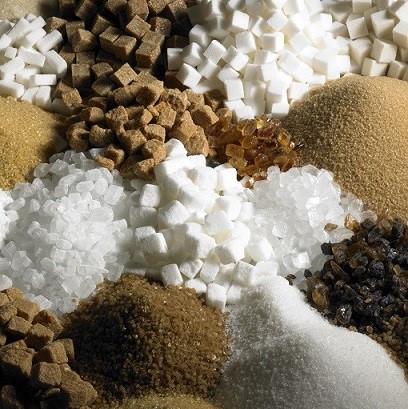 A lot has changed in the acne universe since 500 years ago. Lead-infused make up has thankfully gone out of fashion, and vital acne players like zinc and vitamin C have been confirmed to exist. It’s only 200 years ago that the name p.acnes bacteria was totally unheard of.
A lot has changed in the acne universe since 500 years ago. Lead-infused make up has thankfully gone out of fashion, and vital acne players like zinc and vitamin C have been confirmed to exist. It’s only 200 years ago that the name p.acnes bacteria was totally unheard of.
One change that we wish had never happened, however, is the massive increase in sugar in our diets.
The explosion of sugar due to the conquest of the western hemisphere might be the single biggest factor behind our modern acne epidemic. Back in Henry VIII’s era, you couldn’t walk down the street and buy a delicious caramel chocolate bar, however much you wanted to.
However, you also couldn’t walk down the street and buy an acne-causing caramel chocolate bar, however much you didn’t want to. The Romans ate such little sugar that an apple probably tasted as sweet as an Oreo cookie.
Sugar’s proudest acne skill is increasing inflammation, and its side roles are raising blood sugar and insidious AGEs (free radicals). 80-90% of people eat too much, but an added 5 grams here and there, in places you’d never suspect, is so common that many people whose sugar intake is “under control” would be shocked to hear their real intakes.
The upside is that by controlling sugar, you can wipe away a nice chunk of your acne astonishingly quickly. Your pimples could evaporate within two days.
Here’s part 1 of how sugar conquered the world:
10,000BC – the beginning
For centuries, millennia, since the dawn of time, beehives were the trusted sweetener of the human race.
You could find beehives in any forest, any grassy clearing, assuming they weren’t guarded by angry bears. You could find beehives in all continents except for Antarctica, assuming that a giant race of ice bees wasn’t hiding beneath the ice sheet two miles thick. A prehistoric Spanish rock painting even shows a caveman robbing a store of wild honey.
Yet for just as long, rumours of a grassy honey were trickling out of the far East, carried by travelling merchants.
The first historical logbook clearly mentioning the sugarcane (untranslatable ones may exist) dates back to 325BC, when Alexander the Great dispatched his lieutenant Nearchus to explore the Indian Ocean. He returned with tales of a “reed which yields honey without the help of bees” which produced “an intoxicating drink even though the plant does not bear fruit”.
Sugar milling was first referenced by an Indian text from 100AD. Likewise, the ancient Indian text Mahabhashya from 200BC listed several sugar-containing recipes, including a fermented ginger beverage, rice pudding with milk and sweet barley meal.
The Indians even pioneered the first extraction method, mixing the cane juice with lime (calcium oxide) and egg white to remove impurities, before evaporating the liquid to create crystals. The residual molasses were then washed away with water.
In fact, the word sugar is derived from Sarkara, Sanskrit for gravel, referring to the big crystal chunks. Most scientists believe that India was the sugar cane’s origin, but the tribes of New Guinea reputedly chewed the wild reeds in 8000BC. The truth may never be known.
The word sugar, meanwhile, was first mentioned by the Greek physician Dioscorides (died 90AD): “There is a sort of concreted honey which is called sugar, found upon canes in India and Arabia Felix“. Later, the Roman physician Pliny the Elder (died 79AD) said “It is a kind of honey collected from bamboos. It is white as gum, breaks easily under the teeth“.
The image we get is that to Europeans, sugar was a legend at this point, a treasure of faraway lands as fantastical as Alpha Centuri seems to us today. The main pimple villain was probably still bread.
SUGAR LEVEL: minimal.
500-1499AD – kings and aristocrats take notice
 When Barbarian hordes swept away the fragile Roman empire, Europe was plunged into the dark ages. The average farmer still hadn’t heard of the white stuff, but knowledge among the elites was rising.
When Barbarian hordes swept away the fragile Roman empire, Europe was plunged into the dark ages. The average farmer still hadn’t heard of the white stuff, but knowledge among the elites was rising.
For example, when the venerable Saint Bede died in 735AD, the spice cabinet he left to the monastery contained a small pouch of white sugar. Bede resided in north-east England (Northumbria) – the white stuff was clearly spreading. Travelling merchants planted the sugar cane in Egypt in 710AD, and quickly invented today’s recipe for marzipan, sugar mixed with almond meal.
One classic tale states that returning Christian crusaders planted sugar canes in 1099AD, after gaining expertise while conquering Jerusalem. Legendary explorer Marco Polo supposedly brought the sugar cane to Italy in the 1200s, and coincidentally, Polo also helped to spread aloe vera worldwide.
There was no great leap forward, but slowly, sugar moved from pure legend to a real, but incredibly expensive food stuff.
By the 1300s, Venice was the undisputed European capital of sugar cane farming. Attempts in northern Europe failed, but a 1319 shipping record lists the purchase of 1 million pounds of refined sugar and 10,000 pounds of sugar-infused candy to be delivered to Britain.
That said, it was also estimated that in Britain, a single teaspoon cost 5 dollars in today’s money. It was too expensive to be giving everyone acne (yet) – it was still the territory of aristocrats and noblemen. King Henry II of England, who died in 1189, made regular orders of sugar to his palace, according to a surviving logbook.
His grandson Henry III purchased 300 pounds of sugar in 1243, and his grandson Edward II ordered 6258 pounds in a single batch in 1289. France was no less greedy, as King Charles V enjoyed sugar and cinnamon to spice his foods up as of 1380.
The Venetian stranglehold on sugar farming ended in 1498, when it was introduced to Portugal. But the shores of Europe could not contain it for long…
SUGAR LEVEL: imperceptibly rising.
1500AD – sugar crosses the Atlantic
 By 1453, a crisis had arrived. The Ottoman empire had just conquered Constantinople, the prestigious Arab-European trading hub. Even greedy European kings were now starved of sugar, let alone acne-fearing teenagers.
By 1453, a crisis had arrived. The Ottoman empire had just conquered Constantinople, the prestigious Arab-European trading hub. Even greedy European kings were now starved of sugar, let alone acne-fearing teenagers.
The solution? A sugar plantation on the warm Canary islands, up and running by the 1480s, with the islanders enslaved as workers. In 1420, the Portuguese had already “sugarfied” the West African island of Madeira, with the first documented export to England being in 1456.
The real gamechanger, however, was Chris Columbus reaching Hispañola, modern day Haiti and the Dominican Republic. By 1520, this sunny Caribbean island was the world’s top sugar exporter…
…and most importantly, its success sparked an avalanche of imitators. The British planted sugar on Jamaica, Trinidad and Barbados, while the French scooped up Martinique and Guadeloupe.
Puerto Rico is a classic example. It began life as a Spanish gold mining colony, but by 1530, these gold veins were seriously depleted. Suddenly, the travelling merchants departed for the rumoured riches and wonders of the newly conquered Peruvian empire. Puerto Rico’s Spanish residents were slipping into poverty, so they planted a sugar cane.
The first trapiche was built in 1520, a machine which pressed the sugar cane through 3 grooved rollers and was powered by horses or slaves. In 1532, a letter pleaded with the Spanish king: “your Majesty would be helpful in loaning… two thousand pesos in gold each so that each one can build a mill to grind sugar“. Meanwhile, Portuguese explorer Pedro Cabral planted sugar in Brazil in 1500, after crash landing when ferocious winds blew his boat off course.
The gears were revving up: sugar was now officially preparing for takeover.
1600AD – the acne threat rises
For a while, the white gold barely trickled into Europe. As of 1530, 1000 to 1500 tons of sugar had reached Spain from Hispaniola, sailing under armed convoy with priceless pearls and treasure.
Heavy taxes from Spain, labour shortages, and heavy church taxes all kept the average European dinnertable tragically sugar free. It was the New World, with a whole new set of rules, and a whole new menu of problems. Cuba grew slowly, starting late in 1576 and only inching upwards to 312 tons yearly by 1617.
By 1612, however, Brazilian exports of sugar had reached 14,000 tons a year. This never stopped growing; Brazil had 350 sugar plantations by 1623, and by the 1640s the region of Pernambuco was exporting 24,000 tons alone.
Sugar was also the catalyst for the birth of the African slave trade: 1 million slaves were shipped to Caribbean colonies during the 17th century. The Portuguese island of São Tomé was being outstripped for sugar production, so in a case of “if you can’t beat em, join em”, they switched to exporting slaves to Brazil. The old Venetian and Portuguese sugar industries soon collapsed, unable to compete.
Then came the ferocious trade wars, as the “sugar islands” were the jewels in the colonial crowns.
Initially, England and France roamed the Atlantic sinking Spanish ships and cannonballing settlements, but ultimately, economic warfare was simpler (and easier to wage from the comfort of parliament). Spain passed a law requiring all sugar shipments to use their own ports, like Seville, while Britain’s near identical version was the English Navigations Act, active from 1650 to 1849.
Foreign sugar was taxed at exorbitant rates, as was higher quality sugar, since England wanted all the refinery business to boost its own factories’ profits.
This economic mayhem delay sugar’s rise slightly, but only slightly: consumption in England rose fourfold between 1660 and 1700. From 1700 to 1740 it tripled, doubling again between 1740 and 1775. Meanwhile, the population grew 1.75 fold in that time.
The seeds of today’s acne epidemic were planted. The theme tune of Jaws was beginning to play softly.
Sugar reaches the US colonies!
 Westwards, there was an entire new continent to grow the sugar cane on. The first attempts in the 13 American colonies failed miserably, because of the cold climate, although farmers tried as far north as Jamestown. Instead, the starving villagers were forced to prowl the countryside, harvest maple sap and burn it for syrup.
Westwards, there was an entire new continent to grow the sugar cane on. The first attempts in the 13 American colonies failed miserably, because of the cold climate, although farmers tried as far north as Jamestown. Instead, the starving villagers were forced to prowl the countryside, harvest maple sap and burn it for syrup.
To make matters worse, the UK government passed the Molasses Act in 1733, which imposed massive taxes on sugar imported by the 13 colonies from foreign countries. The Sugar Act of 1764 was even crueller – it didn’t occur to the British that their subjects might rebel.
But rebel they did – out of 15,000 hogshead barrels of sugar imported to early Virginia in 1763, 14,500 tons were smuggled. These sugar disputes may have partly fuelled the American Revolution in the first place. For example, in 1772, a British ship ran aground on a New England beach while hunting for sugar smugglers. These smugglers sent for an armed force who burnt the boat to a crisp.
Gunpower was burnt, cannons were fired, and by 1776, the USA was born. In 1789, the fledgling nation started taxing sugar imports, to raise some cash, but there was a problem: the US had no sugar farms itself to fall back on.
Then came the shining light of hope – Louisiana. Its warm, humid climate and unusually fertile soil in the southern delta region was perfect for growing sugar cane. Its first small-scale farms appeared in 1794, before in 1803, the US purchased Louisiana from France. Louisiana was free from the shackles of the US import tax, and production boomed to 17,050 tons a year by 1824. Businessmen from the northern states flocked to auction houses in New Orleans, although the sugar plantations themselves were highly inaccessible, hidden deep within the humid swamps and wilderness.
What really sealed the deal was Ribbon Cane, introduced in 1817, a rapidly growing agricultural variety which sent production through the roof.
Attempts in Texas, Florida and Georgia were less successful, but America officially had its own sugar supply. Consumption was free to explode like in Europe, and the earliest figures date back to 1822, at 9.5 pounds per capita. By 1860, this had quadrupled to 32.6 pounds per capita, just one third of today’s levels.
Likewise, the traditional sweetness of maple syrup remained alive and well. Total US production was 34,516,000 in 1840 before rising to 40,120,000 in 1860, not as fast as cane sugar, but still respectable.
The more obscure sorghum syrup reached 28 million gallons in 1879, increasing from 7 million gallons in 1859. People could not get enough of the white stuff.
1800AD – newer, cheaper sugar is invented
During the Napoleonic wars, Germany suffered severe shortages of the porcelain ingredient gum arabic, due to the British naval blockade. However, Dr Gottlieb Kirchhof heard rumours that a gum-like replica could be synthesised in a laboratory by heating starch.
Therefore, he grabbed some potato flesh and mixed it with water and acid. He was astonished to find that thick, viscous sugar oozed out instead, alongside crystallised sugar, which was in fact dextrose.
In 1811, this instantly caught the attention of European governments, who were short of sweet, sweet sugar just as much. It later turned out that all starches, whether potato, corn or rice, could be converted in exactly the same way.
Thus, a new, cheap source of sugar was born. In 1855, 11 million pounds of dextrose were manufactured from potato starch in France, while Germany managed 44 million pounds in 1874. A New York dextrose plant opened in 1864, which was forced to close after the only employee who actually understood the extraction process suddenly died.
The invention that really shook the industry up, however, was the sugar beet.
Andreas Marggraf proved that beetroot sugar was identical to cane sugar in 1747, but the discovery lay dormant for 50 years. In 1799, though, the first commercially viable plant opened. To much mockery, the naval blockade had made Napoleon obsessed with finding alternatives to sugar.
Firstly, he tried to extract sugar from trees, then from sweet sorghum, but compared to beet sugar, neither were cost efficient. Therefore, Napoleon gave generous subsidies to French companies manufacturing this sweet substance.
When peace broke out, the beet industry collapsed once again, but luckily, the pockets of legalised slavery in the Caribbean were shrinking and shrinking.
Sugar cane prices rose rapidly, and beet sugar ascended to the next level in 1837 when Vilmorin, the French seed company, engineered a beetroot with more sucrose and a perfectly designed structure for sugar extraction. By 1947, more than 400 beet sugar refineries were toiling away in France. Germany’s industry also boomed.
With new sugar sources came new competition, downward pressure on prices, and probably a lot more acne.
1900AD – sugar goes sentient
 The progress of sugar wasn’t a steady uphill climb. It was much more erratic.
The progress of sugar wasn’t a steady uphill climb. It was much more erratic.
For example, the US civil war caused chaos. The refineries were blasted to smithereens by cannonballs, a slight problem for any farmer. When slavery was abolished, some farm owners literally didn’t know how to operate a wage-based labour system. Import duties also increased to raise war funds, from 0.75 cents to 3 cents per pound, making sugar more expensive to the average American.
But beneath any problems, there was a consistent rise. All limits on sugar mania seemed to have been breached.
The total sugar available on the US market leapt from 440,000 tons in 1866 to 2,800,000 in 1896. Total US production rose from 26,000 in 1866 to 399,000 tons in 1897.
The moment the guns fell silent, sugar burst through the door like an old friend. Cuba also became a sugar big leaguer, exporting 321,000 tons to the US in 1866 versus 1,064,000 tons in 1893. The sugar tariff was also removed from Hawaii, a huge sugar cane exporter (although today, the farms are long gone), which wasn’t yet part of the US.
By the late 1800s, the formerly prosperous Caribbean colonies were in a sorry state, impoverished by the cheapness of European beet sugar. This was great for the British consumer, as beloved staples which we take for granted today were born during the late 1800s, including jam, sweet baked goods, confectionery and marmalade, all made possible by sugar.
The protectionism wars were still raging though. The US abolished duties on raw sugar in 1890, but gave a plentiful subsidy to its own farmers….
…which led to a very significant sugar moment – the Brussels Convention of 1903. Free trade was already gaining popularity, and because of wild price fluctuations hurting the average consumer, this deal officially abolished all tariffs and subsidies. England, Germany, Belgium, Holland, Sweden and other signatories also agreed to ignore sugar from countries subsidising their own production. This took effect on September 1st 1903.
The Brussels Convention went swimmingly, hailed as the first successful global sugar agreement. Everyone clapped each other on the back, but their stated aim? To increase global sugar consumption.
To be fair, nobody knew how unhealthy sugar was yet. In fact, they believed that it restored vitality and energy to the elderly (which it probably would, for about 5 minutes).
Because of the Brussels Convention, sugar consumption in Europe reached an all time high by 1910.
Conclusion
Thus, we conclude the first part of our history of sugar. The sugary big bang behind today’s acne epidemic really kicked off around 1650, when the factories of the Caribbean got their act together and began exporting at full steam.
Come back tomorrow, where we will finish the story, starting with World War 1.
